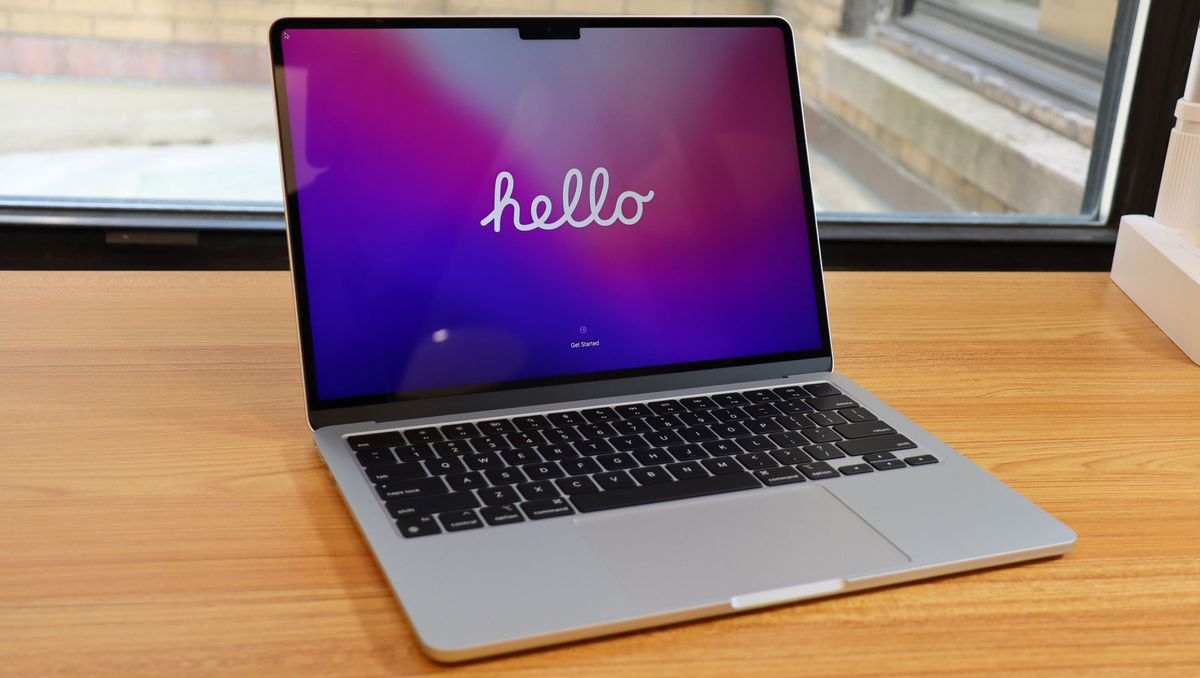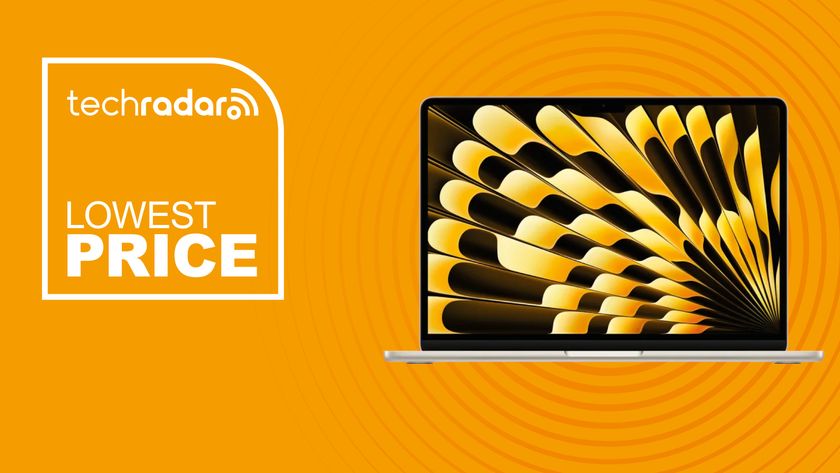MacBook Air M2 vs MacBook Air M1 in pictures: all the key design changes
Changes big and small

Change is good, but it can be hard. I've made no secret about my affection for MacBook Air's iconic wedge shape, which Apple first showed off slipping out of a manilla folder almost 15 years ago.
A MacBook Air, even the Apple Silicon M1 edition unveiled in late 2020, was recognizable from a distance. And despite a lightweight, sub-3-lb. frame, the laptops always felt substantial and solid.
Apple's new MacBook Air (2022, M2), which is based on the brand-new, second-generation M2 Apple Silicon, looks nothing like that original ultra-portable.
The differences are so noticeable that I scarcely need to point them out. Everything from the aluminum chassis to the keyboard, and from the Touch ID to the charge ports is different.
Let's get into some specifics.
The iconic wedge is gone
Both the MacBook Air (2020, M1) and MacBook Air (2022, M2) are made of 100% recycled aluminum, but metals are fashioned in decidedly different ways. Instead of a wedge, the new MacBook Air is all about uniformity. It's 0.44-inches thick, and this is from front to back. At the back edge, the last MacBook Air is 0.63 in. Yes, thicker than the new model. It also sloped down to a tiny 0.16 in. along the front edge for that now-classic wedge shape.
The two MacBook Air laptops are the exact same width: 11.97-inches. On the depth side, though, the MacBook Air M2 is now 8.46-inches, perhaps to accommodate a slightly larger keyboard and that bigger screen (more on that later). The last MacBook Air (2020, M1) is 8.36-inches deep.
Get daily insight, inspiration and deals in your inbox
Sign up for breaking news, reviews, opinion, top tech deals, and more.
Weight-wise, the MacBook Air (2022, M2) drops to 2.7 lbs, losing a slight 0.01 lbs from the 2.8 lbs MacBook Air M1. Because of the slightly larger surface area and 50% smaller, single-sided logic board, though, the new MacBook feels noticeably lighter than the M1 edition.
The slimmening
The new MacBook Air's more uniform chassis has the effect of looking and feeling thinner, especially when it comes to the screen.
A side-by-side comparison doesn't quite do the difference justice because it's really more one of feel. If you wrap your fingers around the screen and back panel on both laptops, the MacBook Air (2020, M1) might feel much thinner at the edges but reach to the center screen of both panels and you may decide, as I have, that the M2 MacBook Air is ever-so-slightly thinner.
Bigger screen with a notch
Adding a notch to the beloved MacBook Air screen might seem like a risk, but Apple mitigates most concerns by making the new MacBook Air (2022, M2) screen, bigger and basically better than the M1 MacBook Air's Retina display. The Liquid Retina Display offers a slightly higher resolution (2560 x 1664 versus 2560 x 1660), and it's brighter by 100 nits, but, surprisingly, offers slightly lower pixel density (224 ppi vs 227 ppi).
While the notch doesn't usually factor into operations like gaming and watching video, it's visible on the desktop and during productivity activities. The good news is that it houses - finally - a 1080p FaceTime camera.
Upscaling F-Keys
Generally, the backlit Magic Keyboard on the M2 MacBook Air looks and feels just like the last one - mostly. I can't quite shake the feeling that the keys are slightly flatter, but that may just be me. The more significant change is the introduction of full-height Function keys. Somehow, this makes the entire keyboard feel more expansive.
That deeper keyboard makes the trackpad look slightly shallower, but don't be fooled. The M2 MacBook Air is a full centimeter wider than the one on the MacBook Air M1.
Overall, the entire keyboard and trackpad is bigger, more open and a better work and play space.
Also, while the stereo speaker grills that sit on either side of the keyboard are gone (for a cleaner look, in my opinion) are gone, there's now a four-speaker Dolby Atmos-capable speaker array hidden under the keyboard.
Touch ID Button upgrade
One of my favorite MacBook Air M2 keyboard changes lives in the upper right corner where you can find the new Touch ID power/sleep button.
It's gone from the tiny barely chicklet size on the MacBook Air M1 to a full-sized key square with an added circular indent for Touch ID. That indent makes it so easy to unlock the MacBook Air M2 or access services with your fingerprint without even looking at the key.
A beefier front edge
This is a lighter system, but it presents a heavier, more industrial look, especially if you close both the M2 MacBook Air and its ancestor the MacBook Air M1.
That 0.16-inches front end is gone, replaced on the M2 MacBook Air with a consistent 0.44-inches edge, when closed. That, of course, is still thinner than the M1 MacBook Air was at its thickest point: 0.63-inches.
Hello, again, Magsafe
Three years after Apple phased out MagSafe charging in favor of USB-C data/charge ports, Apple's brought MagSafe back to the M2 MacBook Air.
Instead of just two Thunderbolt 4 ports, the new MacBook adds a classic MagSafe charge point that you can happily kick off the MacBook Air without sending the whole laptop flying off the desk. I'm especially glad that Apple didn't sacrifice one of the USB-C ports to accommodate the MagSafe charging port.
A flat top
If you close your eyes and touch any Windows laptop and the M1 MacBook Air, you'll instantly know the difference and probably identify the MacBook Air's iconic shape by touch alone. Where the M1 model's body feels like it was expertly carved out of a single piece of aluminum, the Apple MacBook Air M2 feels flat and maybe a bit more pedestrian, like it was stamped instead of machined.
The new flat top is now quite similar to, say, the top of a Microsoft Surface, save that classic and distinctly larger Apple logo in the middle.
Some may love the M2 MacBook Air's uniformity, others will miss that gentle curve of the original.
A flat base and big feet
The M2 MacBook Air's consistent design ethos carries through to a flat bottom - much flatter than the M1 MacBook where the base was always more curved than the top.
It's also interesting to me how the feet changed, from rubber bumps to flat rubber pads surrounded by metal ridges (a look familiar to MacBook Pro owners). This probably makes the laptop a bit more stable on any surface.
A new look and more power
This is the beginning of a new design era for the MacBook Air, one that will take some getting used to.
However, spend a moment with the powerful M2 chip playing games, editing multiple 4K streams, editing RAW images in Photoshop or even just staring at the larger, beautiful screen and you'll quickly forget about the new design and start enjoying the benefits of Apple Silicon and macOS Ventura.

A 38-year industry veteran and award-winning journalist, Lance has covered technology since PCs were the size of suitcases and “on line” meant “waiting.” He’s a former Lifewire Editor-in-Chief, Mashable Editor-in-Chief, and, before that, Editor in Chief of PCMag.com and Senior Vice President of Content for Ziff Davis, Inc. He also wrote a popular, weekly tech column for Medium called The Upgrade.
Lance Ulanoff makes frequent appearances on national, international, and local news programs including Live with Kelly and Mark, the Today Show, Good Morning America, CNBC, CNN, and the BBC.











